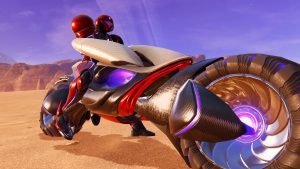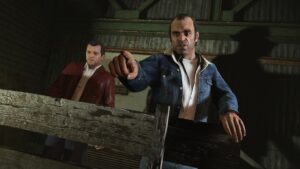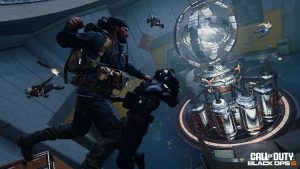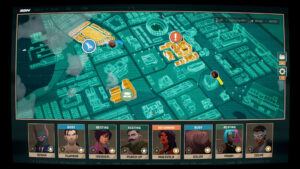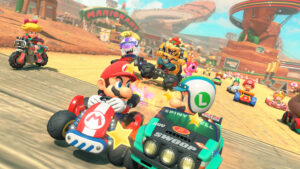
Contra is one of the classics, a franchise so incredibly formative in the early days of the medium that its influence outlasted the IP itself, at least in terms of relevance. In its heyday, Contra was a classic and an assured good time. But the transition to 3D wasn’t kind to the series, and the last release in the franchise, Rogue Corps in 2019, was arguably the nadir of the entire series to date, a game that not only holds the dubious honour of being spectacularly bad to an incredible degree, but also of completely missing the point of what made the original Contra games so beloved to begin with to the point that they would spawn a wave of imitators.
All of which is to say, the bar was very low for Operation Galuga. The Contra franchise has frankly been outputting poor games for far longer than it ever did great ones, at least as far as consistency is concerned. We’ve had some bright spots – such as 2007’s great Contra 4 – but even those were so long ago that there was no real expectation from this new release.
Operation Galuga clears the lowered bar with ease. But it is a legitimately good game. It would probably never be able to stand side by side with the greats of the franchise and the genre’s heyday, but it is better than almost anything the series has managed to put out in decades, and manages to be a legitimately good, but not great, game on its own merits.
Ostensibly the game is supposed to be a remake of the very first game in the series, but functionally, Galuga is perhaps better described as a very loose reimagining. The “star” of the show is the story mode – yes, there’s a story mode, and you can almost argue that its very presence might indicate that the point has been missed thoroughly yet again, but hang on. While the story here is fairly poor, with trite writing and bland voice acting that seems to riff on every single action movie trope possible, it is mostly in keeping with the spirit of the franchise.
And realistically, you can ignore the story mode. There’s a full arcade mode that you can play which has none of the cutscenes and briefings, and just has you jumping into the maps and running through them. You do need to play through the story mode to unlock characters to be able to use in the arcade mode beyond the default two, however, but even then, you can skip every single cutscene and get right into the action.

"Operation Galuga is better than almost anything the series has managed to put out in decades, and manages to be a legitimately good, but not great, game on its own merits."
And that’s the area where the game is good. While it’s a reimagining of the first game (meaning the same general level themes and sometimes, general progression), it brings in elements from other games in the series too, while also adding some of its own in the mix. There are some great reinterpretations of classic set pieces as well, and the camera is a lot more dynamic, and frames the action in a lot more interesting ways as well.
These levels involve a lot of running and gunning. They, for good or for bad, mostly limit themselves to the palette and enemy roster of the first game. What this means is that the areas you progress through and the enemies you fight can feel fairly generic (because the first game in the series was, obviously, the most vanilla – it was the later games in the series that went a bit insane, and went in hard with their setting, aesthetic, and enemy design). Nonetheless, the game still manages to put up a lot of interesting enemies in frenetic and frantically paced shootouts, which can feel satisfying to conquer.
Operation Galuga also, wisely, makes concessions to the fact that it’s a different day and age than the one that the original games came out in. The original Contra games were infamous for being nail bitingly tough – so much so that the existence of the Konami Code was specifically to make the first game easier. Obviously, the kind of difficulty those games used to have wouldn’t fly today, and concessions to modern expectations have been made.
You can still play Operation Galuga like the classics – that is, play it on a high difficulty and set it so that taking even one hit kills you – but if you are not inclined towards that any more, you can set it up so that you have an HP bar (that you lose a life for depleting), and you can set it up on a lower “Normal” and even lower “Easy” difficulty. These alone should allow pretty much anyone to jump in and make their way through to the end, especially since even if you do lose all your lives, you get the chance to continue from the last checkpoint in the level with all your lives and no other penalty.
I do not mean any of this as a criticism. I view these as great changes, because they allow new players (or simply ones who don’ find themselves up to the challenge the traditional difficulties provide) to be able to still meet the game on their own terms. As I mentioned, you can set it up so that you can still play it as a traditional Contra game, and that’s good. It means everyone gets catered to.
Galuga also allows other ways to tweak the experience, including a system of perks, unlocked with credits you gain for playing and replaying levels. These perks can range from always starting levels with certain weapons equipped (rather than having to find them from weapon drops in the level) to tweaking your health bar, the number of lives you have, the range of your mobility, and so on. You can also use these credits to unlock new characters.
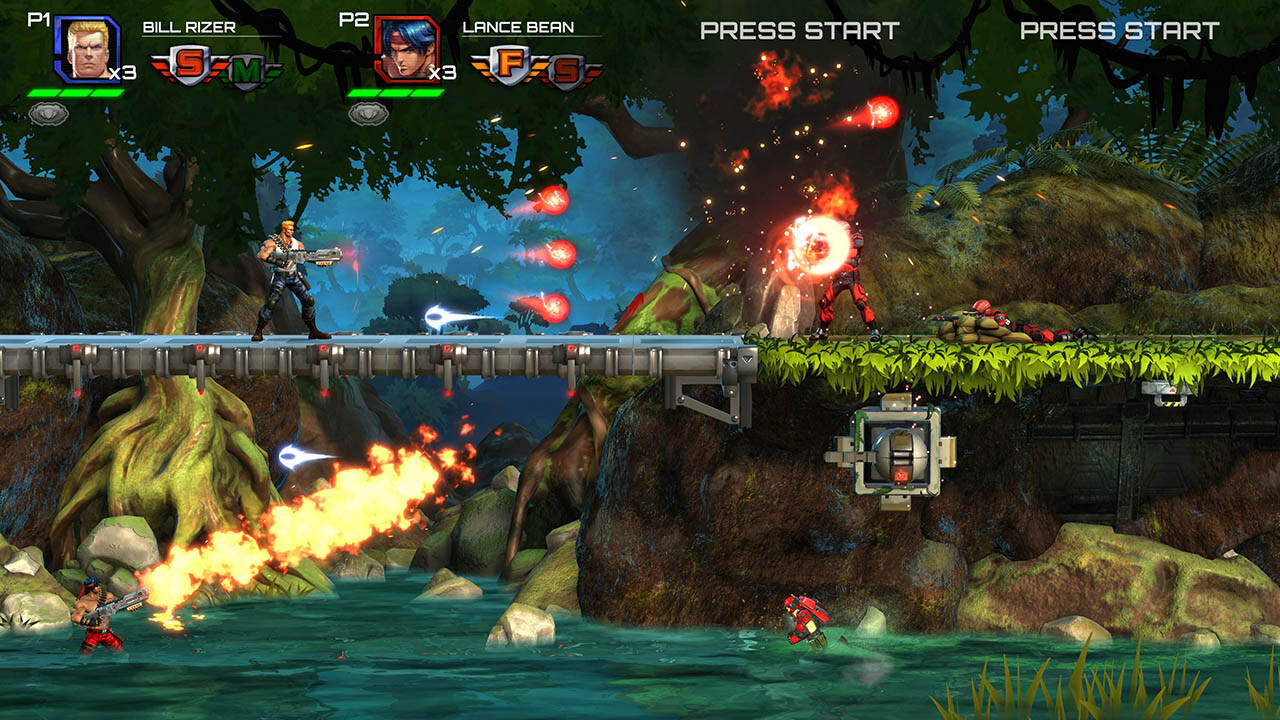
"It won’t ever top anyone’s list of favorite Contra or run and gun game, and it will certainly not convert anyone who was not already a fan of the IP or the genre, but to those already in the know? It’s a good enough title to be worth checking out."
Again, if you want, you can ignore most of the things that make the game easier and just play it like a regular Contra game. On my part, while I used to play Contra endlessly, I can no longer keep up with the level of dexterity and skill that the games demand, so I was glad to see concessions and cushioning available.
Once you do get down to the actual run and gunning, as mentioned, you find a game that is pretty good. It never hits the highs of the original few games – limiting itself just to the first game for enemy and setting being the primary reason for that – but it ends up being a fun enough time, particularly when played with someone in co-op, or just when you get into the zone and start running the levels repeatedly to master them and optimize your runs through them. It’s just good enough to compel you to keep playing it, while never transcending its limitations.
A run and gun limiting itself on the level design and enemy variety is unfortunate, but I do like what we have here a lot, and it’s not lacking in absolute terms, just conspicuous by its absence when compared to some of the other games in the series.
There are other problems with Operation Galuga – for example, the graphics are- well, they’re not – okay let’s stop beating around the bush, they’re pretty bad. It’s an ugly looking game. It’s not just lacking in terms of the tech, but also the art style which is a very noticeable downgrade from the great spritework and 2D aesthetics of some of the best games in the series, including WayForward’s own Contra 4 on the DS. The good thing I can say about them is that they hold a steady framerate at all times, no matter how hectic the action on screen may get.
"In the end, however, a lot of what the game does poorly can be ignored, at least by those looking for a good run and gun or Contra experience."
That matters more than anything else when it comes to Contra, but the unfortunately and obviously low budget nature of the visuals does intrude on the experience fairly often – particularly in the story mode where, let’s face it, the game does not have the budget or production values necessary to back up its storytelling aspirations. Speaking of those aspirations, if you do care about the story (which you shouldn’t, at least not in a Contra game), then you will find it to be extremely poor, tapping on almost every single trope in the book, and, seemingly, playing it straight.
In the end, however, a lot of what the game does poorly can be ignored, at least by those looking for a good run and gun or Contra experience. This game isn’t as good as the classics that it is inspired from, or not even as good as the peak of the modern era, which was Contra 4. But it is a good, well playing, fun entry into the canon, one that retains all the strengths of the franchise, and executes on them well enough to invite plays and replays by those that like this style of game.
It won’t ever top anyone’s list of favorite Contra or run and gun game, and it will certainly not convert anyone who was not already a fan of the IP or the genre, but to those already in the know? It’s a good enough title to be worth checking out, even with all the flaws and caveats that come bundled with the recommendation.
This game was reviewed on PlayStation 5.
Flexibly scaling difficulty accommodating players of all skill levels (including settings to recreate the classic Contra difficuty); levels are fun to run through repeatedly; co-op is fun; uses the camera in interesting ways sometimes.
Story, graphics, writing, and voice acting all range from bland to outright bad; the game doesn't include the crazier enemy and level types of later games in the series, and limits itself to more straightforward and grounded ones from the first title.











